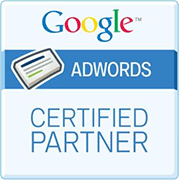It appears as though you’ve got yourself a fantastic Ecommerce Store; it looks shmick, the products are displayed beautifully and it seems to be ticking all the right boxes. You’re even receiving good traffic thanks to a well-established PPC Campaign. There’s just one problem…none of these visitors are making a purchase. In fact, almost as soon as they arrive on your site, they inexplicably leave.
But why?
If you’re experiencing something like this, chances are your beautiful new Ecommerce Store isn’t providing the user experience it should be! Mistakes related to the user experience come in all shapes and sizes, including poor shopping cart functionality, lack of Call to Actions or poor mobile optimization. And sometimes it’s even a seemingly normal design element that’s the cause of glaring issues for your potential customers.
Whatever the issue, if you want to turn your Store visitors into sales, you need to take a close look at the user experience on your site to ensure you’re not inadvertently killing your conversions.
For this reason, we’ve put together this helpful list of the 5 most common user experience mistakes that could be seriously driving away your customers.

1. You’re Using a Template
If you’ve fallen into the Template Ecommerce trap, don’t worry, you’re not the first Small Business Owner to do so. It’s becoming increasingly common for people to choose cookie-cutter Templates and themes from which to create their Stores. But this comes at a huge cost to the overall User Experience of your Site.
Template Ecommerce Stores come with a number of problems. Firstly, due to their severe limitations it can be difficult to customise these templates in a way that best suits your Business and, more importantly, your customers.
Templates are simple by nature, meaning there are certain restriction and limitations they’ll force on your Small Business. This means that if you want to add certain bells and whistles that could optimize your Site visitor’s experience, you won’t be able to achieve this.
Secondly, Template Ecommerce Stores don’t allow for the kind of Online growth that your Business needs. Your Business is constantly changing, growing and expanding, and your Online Store needs to reflect this. Due to the inflexible nature of Templates, you’ll often find yourself bound by the restrictions of your Template Store. This could mean you can’t feature more than 20 products at a time, or else can only ship to certain countries.
For this reason, having a custom designed Website will allow for all of these things, ensuring the absolute optimum user-friendly experience for your visitors.

2. You Think Your Being Creative: But Your Customers Are Confused
It can be tempting to try something creative and unique to add flair and ‘pizzaz’ to your Online Store. But when it comes at the expense of your customers’ shopping experience, it’s just not worth it.
Remember: your overall goal is to sell your products. So if creativity is negatively effecting the usability of your site, then it’s probably best to go back to basics. When customers arrive on an Online Store, there are usually standard navigation tools and certain protocols they are familiar with that will help them best know how to find what they need on your Site.
If you try to get overly crafty by changing these or (worse!) by taking them away, visitors will be left completely confused about how to use and navigate your Store. This is a big problem, because a confused visitor is a lost customer.

3. Ignoring Mobile Customers
As the rise of mobile usage increase, a growing number of people are undertaking Online shopping from their smartphones and tablet devices. This makes it absolutely crucial that you optimize your Store for the best possible mobile experience. Don’t, and you run the risk of cutting out a huge portion of your potential market.
As a Small Business Owner, considerations like Mobile Optimization and responsiveness might not be on the top of your mind, but with so many people now shopping while scrolling, this is a big mistake. If your Online Store isn’t responsive, visitors could be greeted by overlapping text and ugly, stretched screens that make it impossible for them to browse efficiently. This will see them abandon your Site. Immediately.
To ensure you’re not losing customers by the bucket-load, make sure your Website is well-optimized for mobile devices, as this will provide the very best user experience for your Store visitors.

4. Slow Load Times
We live in a Digital World, where people want things here and now – right NOW! So if you notice that your Online Store takes more than a few seconds to load, this could definitely be killing your conversion rates.
It might surprise you, but a delay of just one second in page load times can drop your conversion rates by as much as 7%. If your conversions are already low, that’s a significant hit to your revenue and you’ll be lucky to see any sales at all.
As well as this, slow loading times will make you less favourable to Search Engines, such as Google. This could see your Business appear lower in search results, making you less ‘findable’ to potential customers.
Creative designs, beautiful images and video might be aesthetically pleasing, but they can dramatically impact load times. When considering your own Ecommerce Store try to find a balance that results in fast load times while maintaining aesthetics.

5. You Have a Complex or Confusing Checkout
If you’re receiving a decent amount of traffic to your Store, but aren’t seeing the conversations to match, then one of the biggest culprits is likely your shopping cart and checkout system, which is causing high levels of cart abandonment.
A great deal of research and testing over the last few years has been undertaken to get to the bottom of shopping cart abandonment, with results showing that an overly confusing or long-winded process is what stops shoppers dead in their tracks.
When it comes to optimizing this area of your Online Store, ensure you establish a simple and straightforward system. Ideally, the customer should be able to reach and complete the checkout process in 3 clicks or less, and filling out credit card details and coupon codes should be a quick and effortless process.
If you noticed that your Ecommerce Store contains one or more of these user experience faux pas, then this could explain why you’re not seeing the conversion rates you deserve. However, now armed with the right knowledge, you’ll be better able to optimize your Online Store and give customers a fantastic shopping experience that has them coming back for more!








